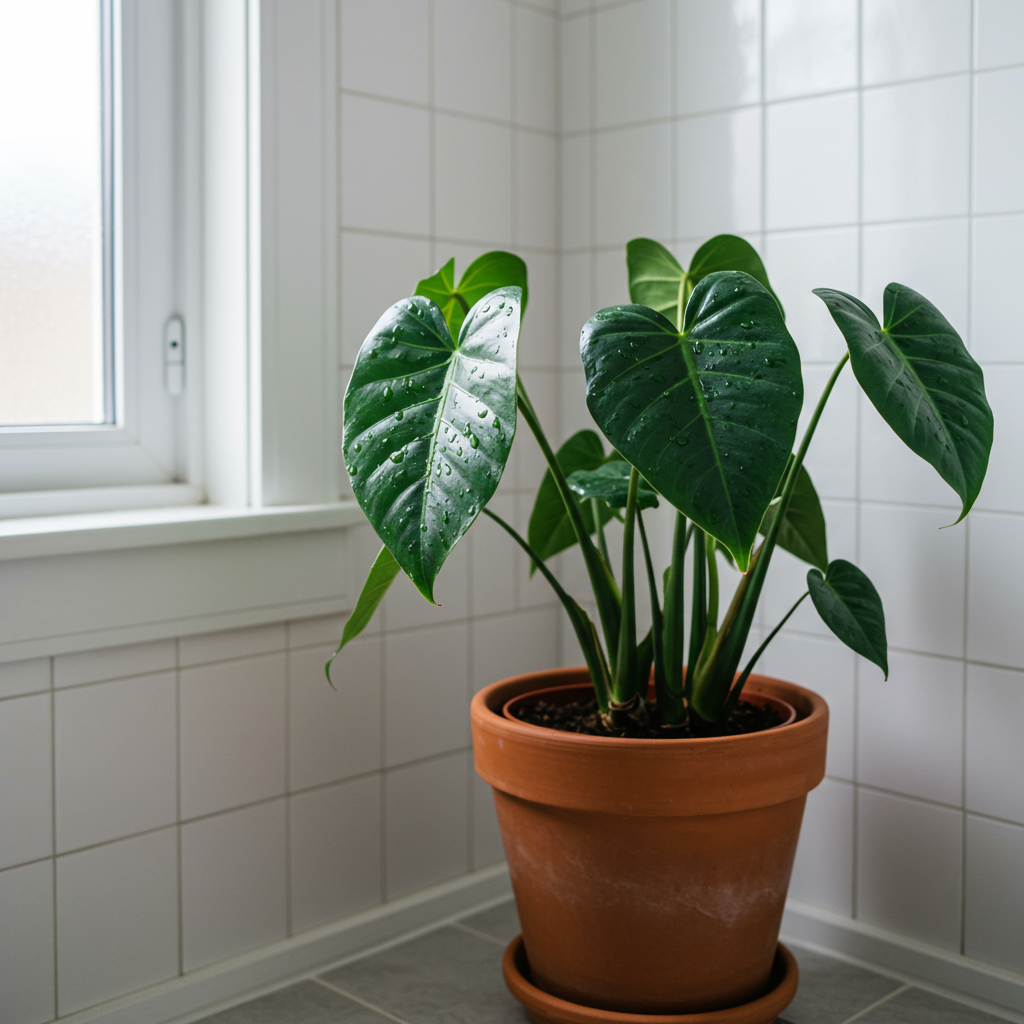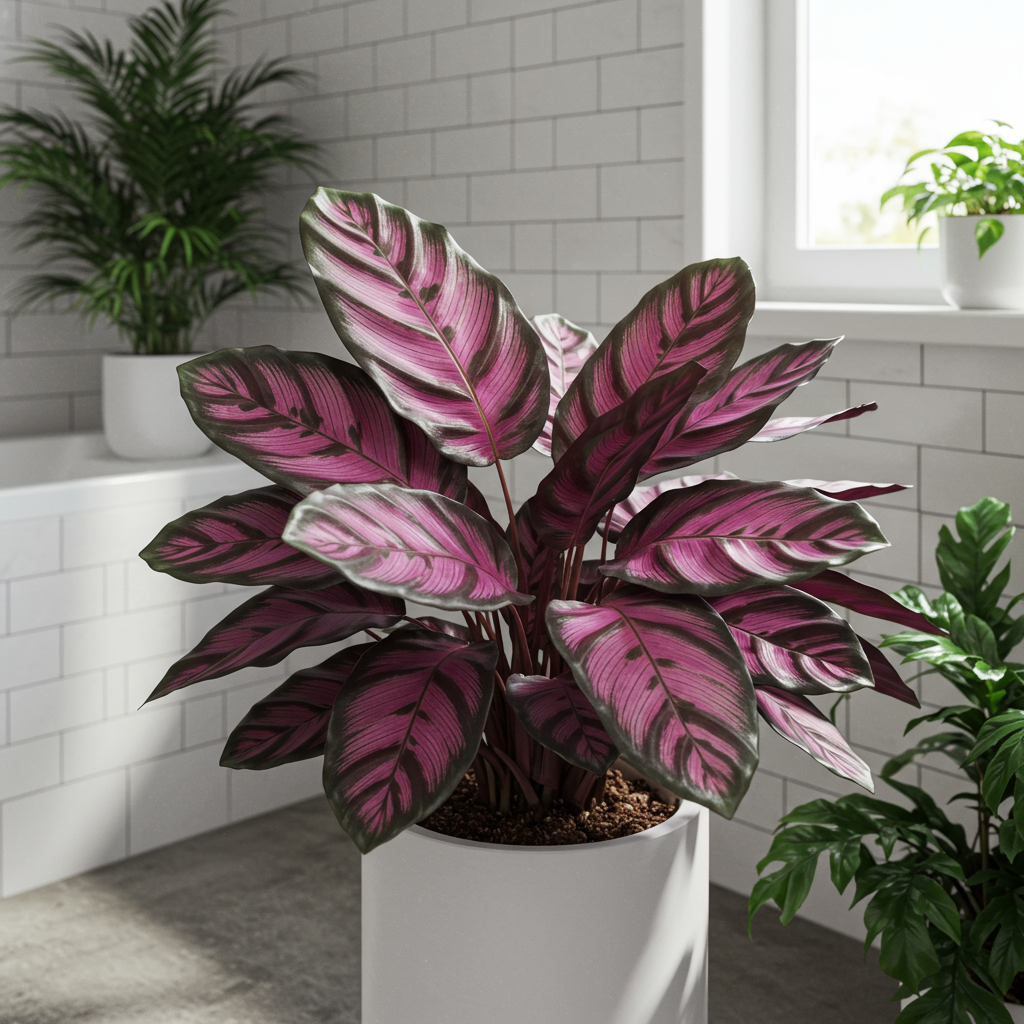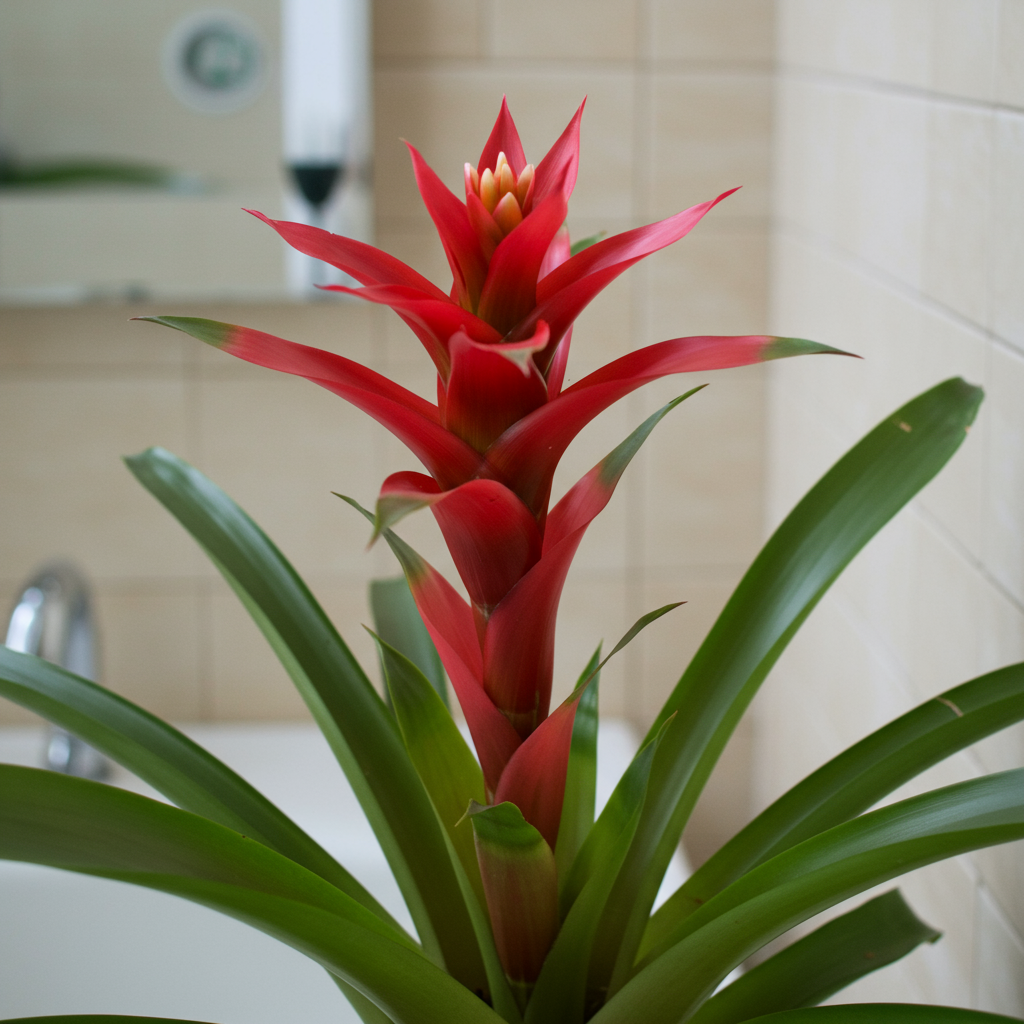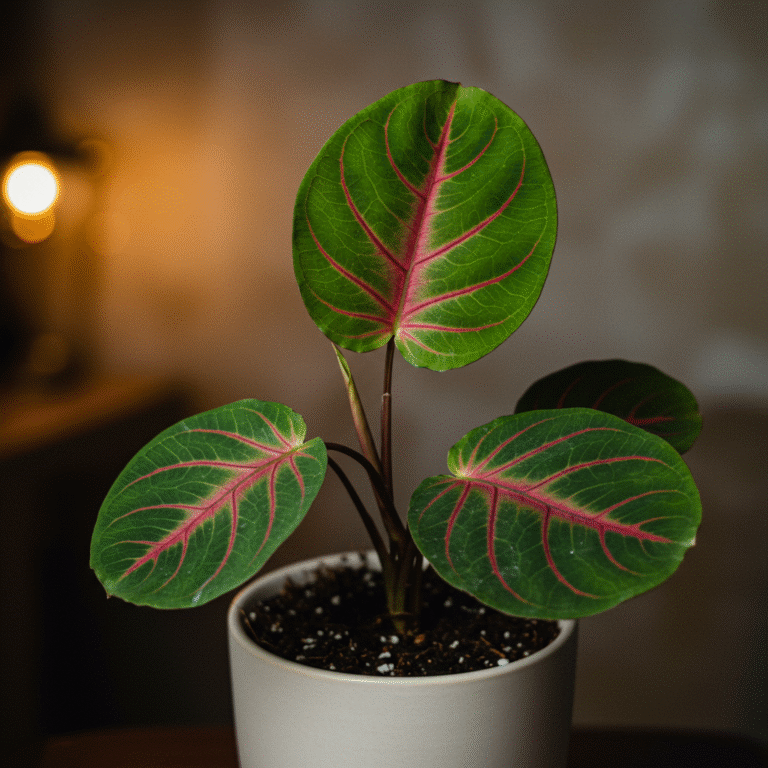21 Bathroom Plants to Create Your Dream Oasis

Tired of a boring, sterile bathroom? Let’s fix that. We’re diving deep into the absolute best bathroom plants ideas to turn your loo into a lush, green sanctuary. Get ready to transform your space from a simple utility room into a personal spa retreat, one leafy friend at a time. It’s easier than you think, and the results are stunning.
Why Your Bathroom is Begging for Plants (The Science Bit!)
Before we jump into the pretty stuff, let’s talk about why plants are so amazing for your bathroom. It’s not just about looks; it’s science! Plants are tiny, green powerhouses that can improve your air, your mood, and the overall vibe of your home. A steamy, humid bathroom is basically a five-star hotel for many tropical plants that would struggle in other parts of your house.
A landmark study by NASA, known as the Clean Air Study, found that common houseplants are natural-born air purifiers. They can filter out yucky volatile organic compounds (VOCs) that are often found in cleaning products, aerosols, and cosmetics commonly used in bathrooms.
NASA Clean Air Study: Top Air-Purifying Plants
| Plant Name | Chemicals Removed |
|---|---|
| Peace Lily (Spathiphyllum ‘Mauna Loa’) | Benzene, Formaldehyde, Trichloroethylene, Xylene, Toluene, Ammonia |
| Snake Plant (Dracaena trifasciata) | Benzene, Formaldehyde, Trichloroethylene, Xylene, Toluene |
| English Ivy (Hedera helix) | Benzene, Formaldehyde, Trichloroethylene, Xylene, Toluene |
| Golden Pothos (Epipremnum aureum) | Benzene, Formaldehyde, Xylene, Toluene, Carbon Monoxide |
| Spider Plant (Chlorophytum comosum) | Formaldehyde, Xylene, Toluene |
Beyond cleaning the air, research has consistently shown that being around plants has a profound impact on our mental well-being. A 2015 study published in the Journal of Physiological Anthropology found that interacting with indoor plants can reduce psychological and physiological stress.
“Our results suggest that active interaction with indoor plants can reduce physiological and psychological stress compared with mental work. This is accomplished through suppression of sympathetic nervous system activity and diastolic blood pressure and promotion of comfortable, soothed, and natural feelings.”
So, that little plant on your windowsill isn’t just sitting there looking pretty. It’s actively working to make you feel calmer and more relaxed. What better place to cultivate that feeling than the room where you start and end your day?
Part 1: The Low-Light Legends
Got a bathroom with a tiny window or indirect light? No problem! These plants don’t just tolerate low light; some actually prefer it. They are the superheroes of shady corners.
1. The Unkillable Snake Plant

First up is the mighty Snake Plant (Dracaena trifasciata). If you think you have a “black thumb” and kill every plant you touch, this is the one for you. Seriously, these guys are tough as nails and thrive on neglect. Their sleek, upright leaves add a modern, architectural touch to any space.
They come in various patterns and sizes, from the classic dark green with grey-green cross-banding to the yellow-edged ‘Laurentii’. They are fantastic air purifiers (thanks, NASA!) and can handle the fluctuating humidity of a bathroom like a champ. Because they store water in their leaves, they are very forgiving if you forget to water them.
Pro Tip: Place a tall snake plant in a floor planter in the corner of your bathroom for a dramatic vertical element. It draws the eye upward and can make a small bathroom feel taller.
2. The ZZ Plant: Your Glossy Green Pal

The ZZ Plant (Zamioculcas zamiifolia) is another all-star for low-light situations. Its wide, dark green, glossy leaves look so perfect they almost seem fake. But rest assured, this plant is 100% real and 100% easy to care for.
It’s a drought-tolerant wonder, meaning it would rather be too dry than too wet. This is perfect for the “set it and forget it” type of plant parent. The humidity from your shower will provide a lot of the moisture it needs, so you’ll water it very infrequently. It’s a slow grower, so the cute little plant you buy will stay cute and little for a good while.
Placement Idea: A ZZ plant looks stunning on a bathroom counter or on a shelf where its waxy leaves can catch the light. It adds a touch of lushness without being overwhelming.
3. The Cascading Golden Pothos

Ah, the Golden Pothos (Epipremnum aureum). This vining beauty is one of the most popular houseplants for a reason. It’s incredibly forgiving, tells you when it’s thirsty (the leaves droop a bit), and grows long, beautiful vines that you can let hang or train to climb.
Pothos is not fussy about light. It will be happiest in medium, indirect light but can easily survive in low light. The only difference you might notice is that in lower light, the golden variegation on its heart-shaped leaves might fade to a more solid green. It absolutely loves the humidity of a bathroom.
Styling Tip: Place a pothos on a high shelf or in a hanging basket and let its vines trail down the wall. It creates a gorgeous, jungle-like waterfall of green that is simply breathtaking.
4. The Super-Tough Cast Iron Plant

The name says it all. The Cast Iron Plant (Aspidistra elatior) is the definition of resilient. This plant can handle deep shade, inconsistent watering, and general neglect without skipping a beat. It was a favorite in Victorian homes, which were often quite dark, so it’s perfectly suited for a low-light bathroom.
It has large, deep-green leaves that grow in a graceful arching form. It’s a slow grower, but it is incredibly long-lived, so think of it as a long-term companion for your space. It adds a touch of classic, sophisticated elegance.
Did You Know? The Cast Iron Plant is so tough that it’s often used in commercial landscaping in areas where nothing else will grow. If it can survive that, it can definitely survive your bathroom.
5. The Elegant Peace Lily

The Peace Lily (Spathiphyllum) is a true classic. With its glossy, dark green leaves and iconic white “flowers” (which are actually a special type of leaf called a spathe), it brings a sense of calm and elegance to any room. It’s another NASA-approved air-purifying superstar, tackling all sorts of common household toxins.
Peace Lilies prefer medium, indirect light but do surprisingly well in lower light conditions, they just may not bloom as much. They are total drama queens and will droop dramatically when they need water, but they perk right back up within an hour of a good drink. The extra humidity in a bathroom will keep their leaves looking their best.
Pro Tip: To encourage blooming, try moving your Peace Lily to a spot with slightly brighter, indirect light for a few weeks. The bathroom windowsill (as long as it’s not in direct, scorching sun) could be the perfect spot.
Part 2: The Humidity Aficionados
These plants don’t just tolerate humidity; they crave it. The steam from your daily shower is like a spa day for them, making your bathroom their ideal home. They will reward you with vibrant colors and lush growth.
6. The Fabulous Fern Family

Ferns are the quintessential bathroom plant. They evoke images of misty rainforests and tropical grottos, which is exactly the vibe we want! They thrive in indirect light and high humidity, a perfect match for most bathrooms.
- Boston Fern (Nephrolepis exaltata): This is the classic fern with feathery, arching fronds. It looks amazing in a hanging basket where it has room to spread out.
- Bird’s Nest Fern (Asplenium nidus): This one is super cool! It has wide, wavy, crinkled leaves that unfurl from a central rosette, looking just like a little bird’s nest. It’s a bit more compact and modern-looking than the Boston Fern.
- Maidenhair Fern (Adiantum): This is the diva of the fern world. It has delicate, lace-like leaves on wiry black stems. It’s absolutely stunning but requires consistently moist soil and high humidity, so it’s a plant that will genuinely love living right next to your shower.
A Word of Caution: The one thing ferns hate is drying out. The bathroom humidity helps a ton, but you’ll still need to check the soil regularly to make sure it stays lightly moist (but not soggy!).
7. The Dancing Calathea

Calatheas, also known as Prayer Plants, are famous for their stunningly patterned leaves that often look hand-painted. They come in a wild array of colors and patterns, with deep purples, vibrant pinks, and intricate green designs. They are called “Prayer Plants” because their leaves fold up at night, like hands in prayer, and lower again in the morning.
These tropical beauties demand high humidity to keep their gorgeous leaves from getting brown, crispy edges. This makes the bathroom the perfect location for them. They thrive in the consistent moisture and warmth provided by your daily showers.
Pro Tip: Calatheas can be sensitive to the minerals in tap water. If you notice brown tips on the leaves, try watering with filtered or distilled water. Your steamy showers will help a lot, though!
8. The Exquisite Orchid

Think you can’t grow an Orchid (Phalaenopsis)? Think again! While they may seem exotic and difficult, the common Moth Orchid is actually quite easy to care for, especially in a bathroom. They love high humidity and bright, indirect light, just like what you’d find near a frosted bathroom window.
Orchids don’t grow in regular soil. They are “epiphytes,” meaning in nature they grow on the sides of trees, not in the ground. You’ll buy them potted in a special mix of bark or moss that allows for great air circulation around their roots. The humidity from the shower mimics their native tropical environment and can help encourage re-blooming.
Placement Idea: An elegant orchid sitting on the vanity is the epitome of spa-like luxury. It adds a pop of color and a touch of sophistication that is unmatched.
9. The Bold Bromeliad

Want a pop of long-lasting, tropical color? Get a Bromeliad (Bromeliaceae). These unique plants are related to pineapples and have a similar growth habit, with a central, colorful flower spike (another bract, like the peace lily) rising from a rosette of stiff leaves. The “flower” can last for months!
Like orchids, many bromeliads are epiphytes that absorb most of their water and nutrients through their leaves and a central “cup” formed by their rosette. They adore humidity and will feel right at home in your bathroom. They don’t need a lot of direct light, making them perfect for a moderately lit space.
Watering Tip: For tank bromeliads, keep a small amount of water in their central cup. Be sure to flush it out and refill it with fresh water every week or so to prevent stagnation.
10. The Radiant Rex Begonia

For truly show-stopping foliage, look no further than the Rex Begonia (Begonia rex-cultorum). These aren’t grown for their flowers but for their incredible leaves, which come in a mind-boggling variety of shapes, colors, textures, and patterns. Think swirls of silver, splashes of pink, deep reds, and velvety blacks.
Begonias love warmth and humidity, but they don’t like their leaves to stay wet for too long, as it can encourage powdery mildew. The key is good air circulation. A bathroom that you use daily and that has a fan is a great spot for these beauties to thrive and show off their psychedelic colors.
Styling Tip: Because their leaves are so ornate, Rex Begonias look fantastic in simple, solid-colored pots that don’t compete with their natural artistry.
Part 3: Hanging & Vining Champions
When counter space and floor space are at a premium, look up! Hanging plants draw the eye upward, create a sense of lushness, and add dynamic visual interest. The bathroom is the perfect place for a hanging garden.
11. The Dainty String of Pearls

The String of Pearls (Senecio rowleyanus) is an Instagram-famous succulent that looks like a living beaded necklace. Its “pearls” are actually modified leaves that store water, and they spill over the side of the pot in long, delicate strands.
While it’s a succulent, it appreciates a bit more humidity than its desert cousins, making a bright bathroom a happy home. It needs plenty of bright, indirect light to thrive, so it’s best for a bathroom with a good window. A hanging planter near the window is the ideal spot for this gem.
Pro Tip: Water from the bottom! Sit the pot in a dish of water for 10-15 minutes to let the soil soak up moisture without getting the delicate “pearls” too wet, which can cause them to rot.
12. The Romantic String of Hearts

Another vining succulent, the String of Hearts (Ceropegia woodii), is as charming as it sounds. It has long, thin, purplish stems adorned with small, heart-shaped leaves that are typically green and silver. It’s incredibly delicate and beautiful.
Like the String of Pearls, it needs bright, indirect light and doesn’t like to be overwatered. It looks absolutely stunning trailing from a high shelf or a hanging basket. The warm, humid air of the bathroom can encourage faster growth and a fuller plant.
Placement Idea: Let the vines hang down in front of a bathroom mirror. The reflection doubles the greenery and creates a beautiful, romantic frame.
13. The Classic English Ivy

English Ivy (Hedera helix) is a timeless classic. This vigorous vine can be trained to climb walls, trail from baskets, or even be shaped into topiaries. It’s another of NASA’s top air-purifying plants, known for its ability to filter airborne fecal matter particles… yes, you read that right. That alone makes it a bathroom MVP!
It prefers cooler temperatures and moist, humid conditions, so it’s a great choice for a bathroom that doesn’t get overly hot. It can tolerate lower light levels, making it versatile for different spots. Let it trail from a cabinet or train it to frame the window.
A Word of Caution: English Ivy can be toxic to pets if ingested, so be sure to keep it out of reach of curious cats and dogs.
14. The Sweetheart Plant (Heartleaf Philodendron)

Often confused with Pothos, the Heartleaf Philodendron (Philodendron hederaceum) has similar heart-shaped leaves, but they are typically softer, thinner, and have a more matte finish. It’s an incredibly easy-going and fast-growing vine.
It loves warmth and humidity and is very tolerant of a wide range of light conditions, from low to bright indirect. It’s the perfect beginner plant and will reward you with long, lush vines with very little effort. Its forgiving nature makes it a stress-free addition to your bathroom oasis.
Styling Tip: Try placing it on top of a tall bathroom cabinet or armoire. The vines will cascade down the side, creating a beautiful living curtain of green.
15. The Prolific Spider Plant

The Spider Plant (Chlorophytum comosum) is a retro classic that’s back in style. It’s fun, easy, and incredibly generous. These plants produce long stems with tiny white flowers, which then develop into baby spider plants, or “spiderettes,” that dangle from the mother plant like little spiders on a web.
They love the humidity of a bathroom and prefer bright, indirect light, which helps them produce more babies. They are also fantastic air purifiers. Hanging them is the best way to show off their unique growth habit and all their little offspring.
Pro Tip: You can easily propagate a Spider Plant! Just snip off one of the spiderettes that has started to form little nubs of roots and place it in a small pot of soil. You’ll have a new plant to share with a friend.
Part 4: The Statement Makers
Have a larger bathroom with a bit of floor space? Go big or go home! A large statement plant can act as living sculpture, instantly elevating the entire room and becoming a stunning focal point.
16. The Iconic Monstera Deliciosa

The Monstera Deliciosa, or Swiss Cheese Plant, is the undisputed king of tropical houseplants. Its giant, glossy, fenestrated (split) leaves are iconic for a reason. This plant screams “jungle paradise” and can transform a boring bathroom corner into a feature.
Monsteras love warmth, humidity, and bright, indirect light. A bathroom with a good-sized window is the perfect spot. As it grows, it will want to climb, so providing a moss pole will encourage it to develop larger, more mature leaves with more splits.
Space Saver Tip: Even if your bathroom isn’t huge, a younger Monstera can live happily on a small stool or plant stand for a year or two before it gets too big. It’s a worthy investment in style.
17. The Fickle but Fabulous Fiddle Leaf Fig

The Fiddle Leaf Fig (Ficus lyrata) has been the “it” plant for interior designers for years. Its huge, violin-shaped leaves make a bold architectural statement. However, it is notoriously finicky. It demands lots of bright, indirect light and hates being moved.
If—and this is a big if—you have a large bathroom with a big, bright window that doesn’t get direct, scorching sun, you might just be able to make a Fiddle Leaf Fig happy. The extra humidity in the bathroom can help prevent the dreaded brown, crispy leaf edges that plague these plants in drier homes.
Is It Worth It? If you have the right conditions, absolutely. A thriving Fiddle Leaf Fig is a showstopper. But be honest with yourself about your light situation before you bring one home.
18. The Tropical Bird of Paradise

Want to feel like you’re on a permanent vacation? The Bird of Paradise (Strelitzia nicolai) is your plant. Its massive, banana-like leaves give an instant tropical resort vibe. It grows tall and upright, making it a great choice for adding height to a room.
This plant needs a lot of bright light (including some direct sun) to thrive and eventually produce its signature bird-shaped flowers. It also loves humidity. A large bathroom with a skylight or a big south-facing window would be its dream home.
Pro Tip: Keep the huge leaves of your Bird of Paradise and Monstera looking their best by wiping them down with a damp cloth every few weeks. This removes dust, helps the plant breathe, and keeps them looking glossy and healthy.
Part 5: The Quirky & Unexpected
Think outside the pot! These bathroom plants ideas are a little different and add a ton of personality and charm to your space.
19. The Magical Air Plants

Air Plants (Tillandsia) are one of nature’s coolest creations. They don’t need any soil at all! In the wild, they cling to trees and rocks, absorbing all the water and nutrients they need from the air through their leaves. This makes them incredibly versatile for decorating.
The high humidity of a bathroom is a paradise for air plants. Most of the time, they can get all the moisture they need just from the steam of your shower. You can place them in glass terrariums, mount them on driftwood, or just sit them in a pretty dish.
Care Tip: Even in a humid bathroom, it’s a good idea to give your air plants a good soak in a bowl of water for about 20-30 minutes every couple of weeks to make sure they are fully hydrated.
20. The Zen-Inducing Lucky Bamboo

Despite its name and appearance, Lucky Bamboo (Dracaena sanderiana) is not actually bamboo at all. It’s a type of Dracaena that can be grown in water. It’s a popular plant in Feng Shui and is believed to bring good luck and fortune.
It’s a perfect bathroom plant because it’s happy in lower light conditions and is incredibly easy to care for. Just place the stalks in a vase or container with some pebbles to hold them in place and fill it with an inch or two of water. It adds a clean, minimalist, spa-like feel to the room.
Water Tip: Change the water every week or two to keep it fresh. Like Calatheas, Lucky Bamboo can be sensitive to chemicals in tap water, so using filtered or distilled water is best.
21. The Verdant Wonder of Moss

Want a truly unique and biophilic touch? Create a moss wall or a moss frame. Preserved moss requires zero maintenance (no watering, no light) and gives you the lush, green look of a living wall without any of the work. You can buy panels of it to create a stunning accent wall.
Alternatively, you can cultivate living moss in a terrarium. The high humidity of a bathroom is the perfect environment for it. A beautiful glass cloche filled with vibrant green moss on your countertop is a tiny, self-contained ecosystem that is fascinating to look at.
DIY Idea: Try creating a small moss terrarium in a large glass jar. Add a layer of pebbles for drainage, some activated charcoal, a layer of potting soil, and then arrange your live moss on top. It’s a fun, simple project with a huge visual payoff.
Frequently Asked Questions (FAQ)
1. Can I really have plants in a bathroom with no windows?
Yes, but you’ll need to cheat a little. Your best bets are the super low-light tolerant plants like the Snake Plant or ZZ Plant. However, even they need some light to survive. You can install a full-spectrum LED grow light bulb in one of your existing light fixtures, or you can rotate your plants out every week or two, swapping them with a plant from a sunnier room to let them “recharge.”
2. How often should I water my bathroom plants?
This is the trickiest question, and the answer is: it depends. Because the bathroom is so humid, you’ll water less often than you would for plants in other rooms. The golden rule is to always check the soil first. Stick your finger an inch or two into the soil. If it’s dry, it’s time to water. If it’s still damp, wait a few more days.
3. Will the steam from my shower hurt my plants?
On the contrary, most of the plants on this list will absolutely love it! The warm, humid steam mimics the tropical environments where they naturally grow. The only exception is plants with fuzzy leaves like African Violets, which can develop spots if water sits on their leaves. For most, though, shower steam is a free spa treatment.
4. What are the signs my plant isn’t happy in the bathroom?
Look out for yellowing leaves (often a sign of overwatering), brown crispy tips or edges (a sign of underwatering or low humidity, which is less likely in a bathroom), or long, spindly, pale growth (a sign that the plant needs more light). If you see pests, move the plant immediately to quarantine it from your other green friends while you treat it.
5. Are these bathroom plants safe for my pets?
Not all of them. Many common houseplants like Pothos, Snake Plants, Peace Lilies, and English Ivy are toxic to cats and dogs if ingested. Plants that are generally considered non-toxic include Spider Plants, Boston Ferns, Calatheas, and Orchids. Always research a specific plant’s toxicity on the ASPCA’s website before bringing it into a home with pets, and a great strategy is to use hanging planters or high shelves to keep all plants out of reach.

Conclusion: More Than Just Decoration
Turning your bathroom into a green oasis is about so much more than just following a design trend. It’s about creating a space that actively nurtures your well-being. The simple act of caring for a living thing, of watching it grow and thrive, connects us back to the natural world in a powerful way.
Your plant-filled bathroom becomes more than just a room for hygiene; it becomes a personal sanctuary, a place to de-stress, breathe deeply, and reconnect with yourself at the start and end of each day.
The secret takeaway is this: start small. You don’t need to create a full-blown jungle overnight. Pick one plant from this list that speaks to you. Find the perfect spot for it. Learn its needs and enjoy the small pocket of life and beauty it brings to your space. You’ll be amazed at how one little plant can completely change the way you feel about a room, and yourself.
Sources for Further Research
- NASA. (1989). Interior Landscape Plants for Indoor Air Pollution Abatement.
https://ntrs.nasa.gov/citations/19930073077 - Lee, M. S., Lee, J., Park, B. J., & Miyazaki, Y. (2015). Interaction with indoor plants may reduce psychological and physiological stress by suppressing autonomic nervous system activity in young adults: a randomized crossover study. Journal of Physiological Anthropology.
https://www.ncbi.nlm.nih.gov/pmc/articles/PMC4419447/ - Bringslimark, T., Hartig, T., & Patil, G. G. (2009). The psychological benefits of indoor plants: a critical review of the experimental literature. Journal of Environmental Psychology.
https://www.researchgate.net/publication/222423979_The_psychological_benefits_of_indoor_plants_A_critical_review_of_the_experimental_literature - ASPCA. (n.d.). Toxic and Non-Toxic Plants List.
https://www.aspca.org/pet-care/animal-poison-control/toxic-and-non-toxic-plants

